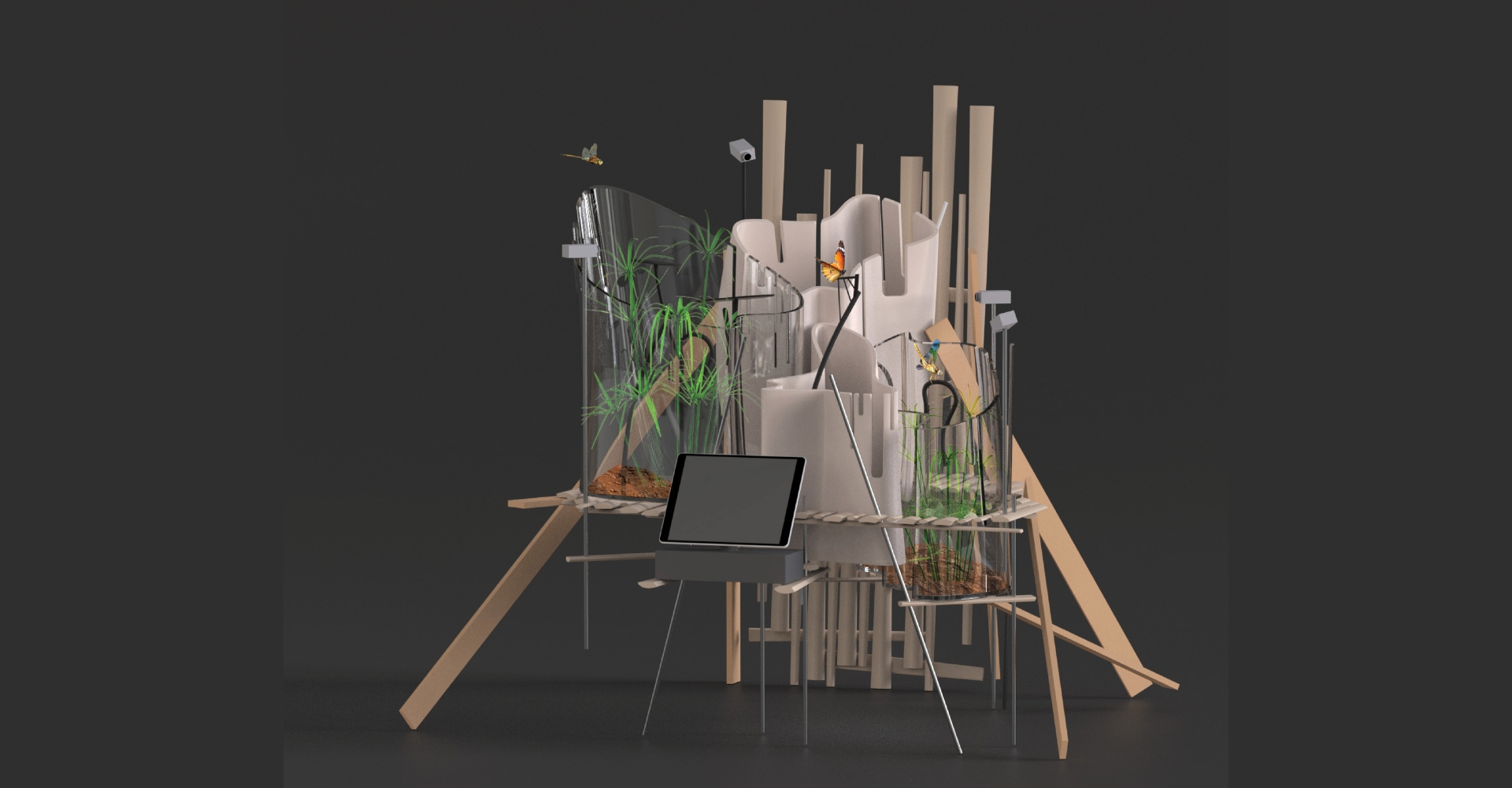A human-insect ecosystem redefining coexistence
A device that challenges human supremacy over nature by transforming insects into active agents of environmental monitoring. Akin creates a symbiotic ecosystem where humans learn from insects how to read and heal the planet.
Humans have exploited nature in countless ways, maintaining the belief that they are superior to it. This perspective has shaped an idealized and romanticized vision of nature, detached from reality and imbued with metaphors, symbolism, and aesthetics. Nature has been co-opted, stripped of its autonomy, and forced into a framework of power and capitalism, becoming subject to categorization and classification—even in the name of science. Yet, this systematization has severed the real connection between humans and nature.
Can we dismantle this artificial hierarchy and build a relationship based on coexistence? Brazilian anthropologist Eduardo Viveiros de Castro argues that while humans recognize cultural plurality, they tend to perceive nature as a singular, universal entity governed by objective laws. This perspective, rooted in Western thought and perpetuated by colonial narratives, limits the way different cultures connect with biodiversity and constrains our understanding of nature’s multiple forms of existence.
Recognizing nature’s pluralism is essential for developing new epistemologies and rethinking our relationship with the natural world. It is not just about acknowledging local species but also about reclaiming and amplifying indigenous perspectives, which are deeply attuned to their environments. This awareness fosters environmental justice, where culture and nature are interdependent rather than divided by a rigid dichotomy.
Akin is conceived with the ambition of forming a perceivable human-insect ecosystem, granting agency to non-humans. Insects, often culturally marginalized and undervalued, play an essential role in ecosystems. Akin challenges this perception by highlighting the need for humans to support and amplify the capacities of these resilient beings, which adapt to ecological changes. The project draws inspiration from bioremediation, a process in which living organisms help neutralize pollutants in a given environment.
Akin functions as a device that welcomes insects, offering them shelter and nourishment while simultaneously detecting air, soil, and water quality through their biological responses. The device’s components analyze harmful substances found in insects’ bodies and display the data on small integrated digital screens.
These glass and plastic containers, resembling terrariums, create a nature-like environment where insects, plants, and microorganisms coexist symbiotically. Species such as dragonflies and butterflies not only find refuge and food but are also elevated to the role of ecological indicators. Through advanced sensors and cameras, the device monitors their health, analyzing body temperature, coloration, and other subtle physical changes that reveal environmental pollutants.
The collected data is transmitted to a central system, producing a detailed overview of ecological conditions. Dragonflies, for example, can indicate the state of potholes or riversides, while butterflies reflect the health of green fields and hillsides. By using these living species as bioindicators, environmental monitoring shifts from conventional hardware to natural, organic responses, fostering a mutually enriching relationship between humans and non-humans.
Akin challenges the hierarchical view of nature, fostering a reciprocal relationship where all beings collaborate in sustaining ecosystems. Insects, once overlooked, gain agency and self-determination, becoming vital contributors to environmental restoration in a cycle of conscious collaboration and coexistence.
